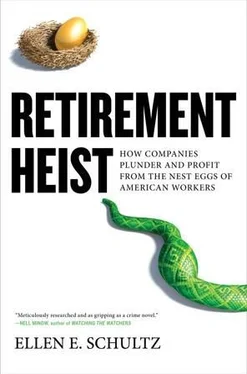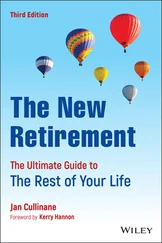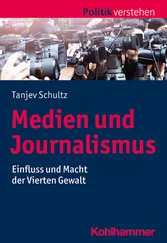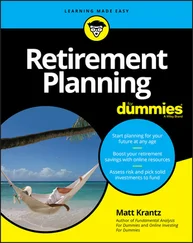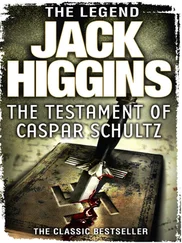Ackerman had flown corporate jets for Hughes Aircraft for twenty-six years, delivering executives, including C. Michael Armstrong, then the chairman of Hughes Electronics, to meetings around the globe, ski vacations, and private homes in places like Baja and Taos. He loved being a pilot, but regulations required that he retire at age sixty, in 1992. He plowed his retirement savings into an eighteen-acre farm outside of Santa Maria, California, where he and his wife, Audrey, cleared land and grew grapes to sell to local wineries.
Five years after he retired, in 1997, defense giant Raytheon acquired Hughes. The acquisition brought with it a portfolio of thousands of retirees, along with pension and health care liabilities of $5.6 billion, and $6.4 billion in assets to pay the retirees’ benefits. In other words, as part of the acquisition, Raytheon got a pool of assets that was more than large enough to pay every cent of the retirees’ pension and healthcare benefits until they died. Hughes, in effect, sold roughly $1 billion in pension surpluses to Raytheon. This boosted the price Raytheon paid for Hughes, but the acquisition had an immediate payoff: The infusion of billions of dollars of pension assets into Raytheon’s pension plan generated roughly $500 million of income in the first year.
Despite having acquired $1.2 billion more than needed to pay the retirees’ pensions, Raytheon did what other companies typically do when they acquire a portfolio of assets: It set about trying to maximize its investment. Under pension law, a company can’t cut pensions once retirees start receiving them. But if it determines that the retirees are mistakenly receiving benefits that are too large, it can claw the overpayments back.
One of the first things companies do is assign their benefits consultants to flyspeck the records and ferret out mistakes in the company’s favor. Given the complexities of pensions, it’s no surprise that they find some. It might be that an incorrect interest rate was used, or that twenty years earlier, a prior owner of the portfolio miscalculated a cost-of-living increase. Raytheon hired Hewitt Associates for this task. On its Web site at the time, Hewitt boasted that one of its audits had “uncovered $4.1 million in savings per year by eliminating participants erroneously left on the carrier’s system.”
Hewitt concluded that Ackerman’s pension had been incorrectly calculated. Pilots are required to retire by age sixty, so many receive a pension supplement until they reach age sixty-five. The pension administrator had forgotten to end the supplement when Ackerman turned sixty-five. Now Raytheon wanted its money back.
Pension law requires that pension overpayments be returned to the pension plan, but it doesn’t say who should return the money: the employer that made the mistake, the current portfolio owner, or the retiree. Companies usually pursue repayment from the retirees or their surviving spouses, by reducing the person’s pension or even stopping it altogether until the overpayment is recovered. Private employers like Hughes are allowed to offset 100 percent of a retiree’s pension to recoup an overpayment. Multiemployer pension plans, which cover retirees at different companies, are limited to 25 percent, while the Pension Benefit Guaranty Corp., which takes over failed plans, can reduce a pension by no more than 10 percent, and doesn’t charge interest.
Ackerman made increasingly frantic calls to the toll-free number of the pension administrator, arguing with the clerk, who didn’t know how pensions work, let alone the kind of pilot’s pension Ackerman had. Ackerman couldn’t prove he hadn’t been overpaid—he was a pilot, not an actuary. He scrambled to find the details in pension stubs going back years, documents he’d received, or forms he’d signed. He couldn’t figure out how the pension was calculated. “When your pension gets shifted from one company to another,” his wife, Audrey, concluded, “they’ve got you over a barrel.”
Seniors’ advocates say it’s unfair for retirees struggling with small pensions on fixed incomes to pay for a company’s mistakes. “Our clients are often confused and shocked to learn that their pension plan overpaid them,” says Justin Freeborn, a legal-aid lawyer with the Western States Pension Assistance Project in Sacramento, California, funded in part by the U.S. Administration on Aging. He has seen a steady stream of frightened retirees in recent years coming for help when they receive demanding letters from the pension administrators. “In most cases, they had no idea they were receiving the wrong amount. They’ve already spent the overpaid money, and they have no way to pay it back.”
Chuck Ackerman didn’t have the money or the time to fight in court: Just four days before he got the letter from the pension administrator, he learned that the esophageal cancer he’d been treated for had spread to his liver and lungs. Figuring his days were numbered, he appealed to the company to forgive the debt. While awaiting an answer, he began chemotherapy treatments at a hospital near Santa Barbara, where he ran into a retired vice president of Hughes and told him about his pension problem. A few weeks later, when he checked his mailbox, he found a note from the retired executive, with a personal check for $5,000. He also found a letter from the retirement board of Raytheon, denying his appeal to review their decision to dock his pension.
Raytheon refused to forgive the debt and demanded that the Ackermans repay it within a year. The couple appealed this decision, because it would have consumed all of their pension plus most of their Social Security, leaving them with nothing to live on. Raytheon relented, and later that year agreed to let them repay $500 a month. Between chemotherapy treatments and battles with the pension administrator, Ackerman poured himself into farmwork. Even as his six-foot-four-inch frame dwindled to 140 pounds, he also made various improvements on the farm—fixing the roof, mending outbuildings. What bothered him the most, Audrey recalled, was that after he’d spent so many years as a pilot making sure the Hughes executives were safe, “he felt like the company considered him a liar and a cheat.”
Ackerman died in 2002, and it took his wife two and a half years more to repay the debt to Raytheon, out of her diminished widow’s pension. Then, for three months, even after she’d finished paying the debt, Raytheon mistakenly continued to withhold the $500 monthly repayments. Only after she complained a number of times did Raytheon correct the mistake.
A portfolio of retirees can change hands so many times that even the new owner of the retiree portfolio can’t keep track of who’s owed what. In the late 1990s, British Petroleum, or BP, as it is now called, acquired a portfolio of retirees from a variety of companies when it merged with Amoco. In 2000, it hired a new pension administrator, Fidelity Investments Institutional Operations Co., which handles benefits plans covering about nineteen million employees and retirees. The BP plan, thanks to its promiscuous rounds of acquisitions and mergers, had close to fifty thousand U.S. retirees, plus seventy thousand workers and former employees who’ll get pensions someday. Fidelity audited the plan in 2004 and concluded that 316 retirees had mistakenly been paid a total of $100 million that some other predecessor company owed. BP began the process of recouping the money.
One of the retirees was Charlie Craven, a retired mine supervisor in Tucson. Craven had been receiving a pension of $346 a month for eighteen years, until January 2005, when, instead of a pension check, he received a letter from Fidelity informing him that a recent audit revealed he was receiving benefits in error.
Читать дальше
